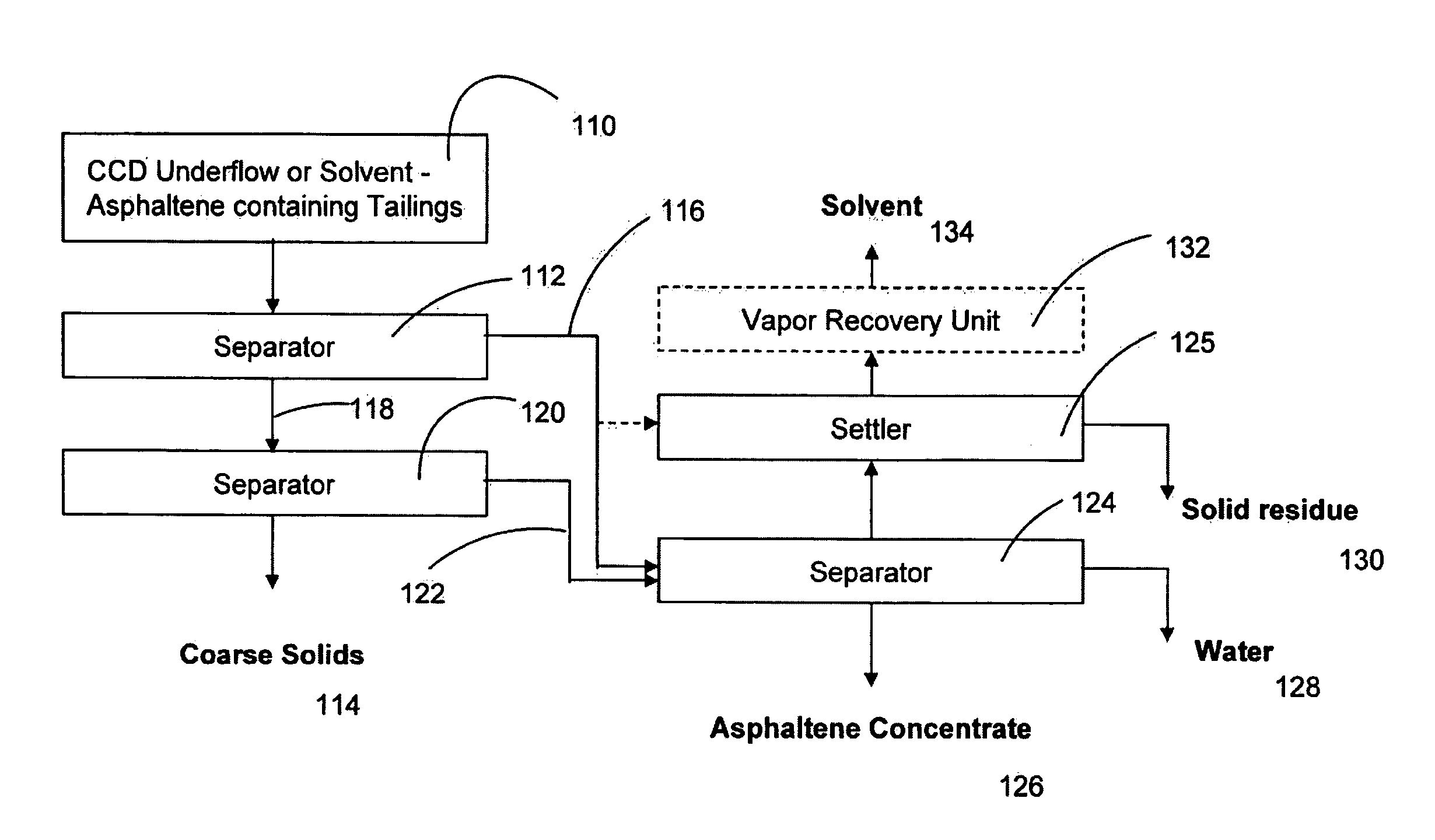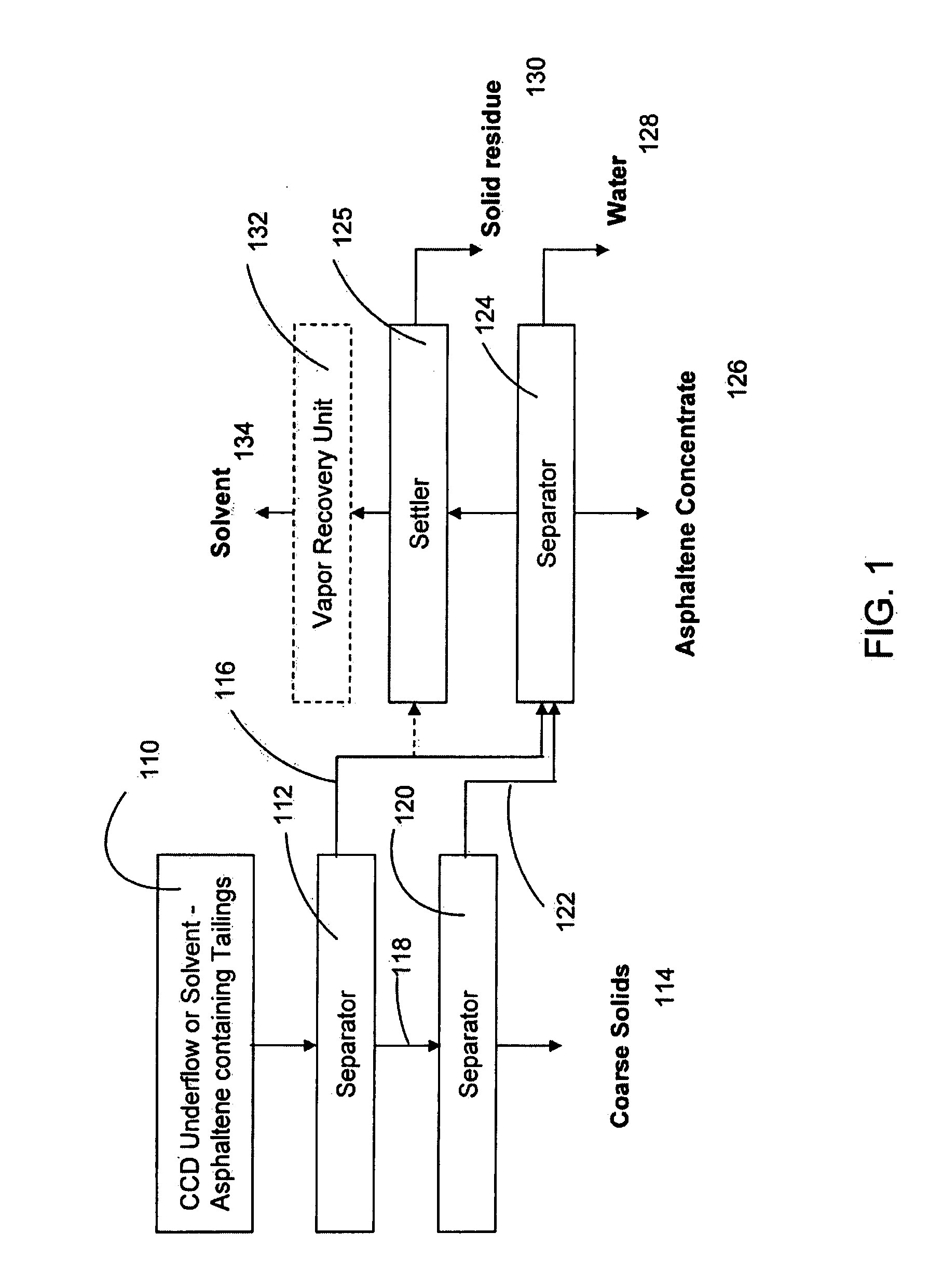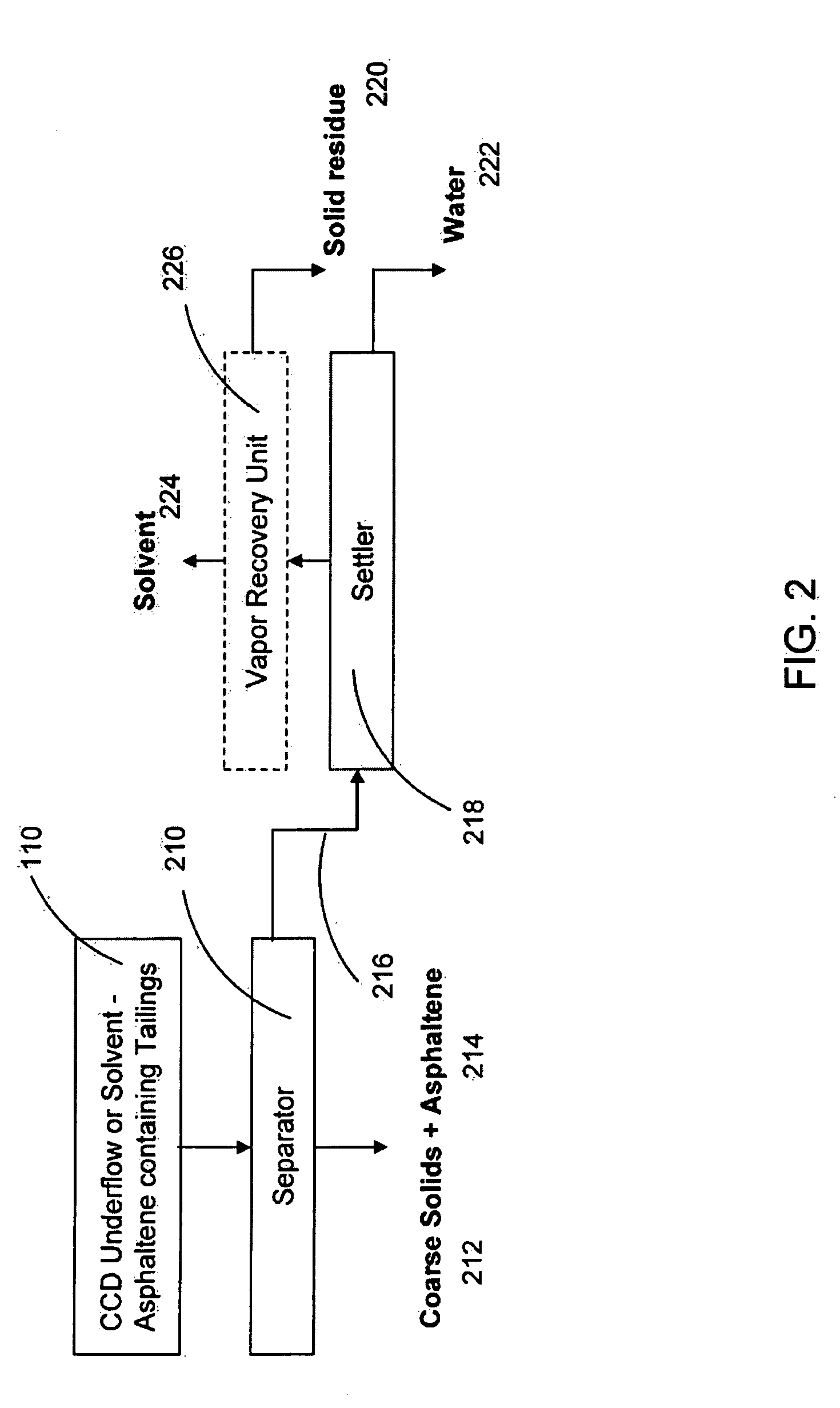Separation of tailings that include asphaltenes
a technology of asphaltene and tailings, which is applied in the production of liquid hydrocarbon mixtures, working up pitches/asphalt/bitumen, petroleum industry, etc., can solve the problems of insufficient separation of mineral solids, insufficient separation of solids that remain in water and solvent mixtures, and insufficient separation of minerals. , to achieve the effect of less energy consumption, easy separation of solvents, and high molecular weigh
- Summary
- Abstract
- Description
- Claims
- Application Information
AI Technical Summary
Benefits of technology
Problems solved by technology
Method used
Image
Examples
example 1
[0054]A hydrocyclone was used to separate solvent from the tailings generated as part of the process of recovering hydrocarbons from oil sands. The tailings included approximately 5 wt. % heptane (the solvent) 25 wt. % solids, and the remainder was water. The solids include asphaltenes and mineral solids (the ratio of asphaltenes to mineral solids was approximately 1:1) as well as clay. The heptane precipitated the asphaltenes so that they were part of the solids fraction of the tailings.
[0055]The tailings were initially separated with a Krebs 2 inch hydrocyclone (model U2-GMAX). This bench scale hydrocyclone was used to demonstrate the feasibility of this approach. It should be appreciated, of course, that larger, ceramic lined hydrocyclones may be used at a commercial level. The tailings were stored in a closed vessel that functioned as the feed storage tank. A centrifugal pump was connected to a variable frequency drive to feed the tailings into the hydrocyclone at a pressure of ...
example 2
[0057]A Krebs 1 inch hydrocyclone was used to further separate the asphaltenes and solvent from the mineral solids in the heavy component obtained in Example 1. It should be appreciated that the feed includes some additional water that was added after the initial separation. It is desirable to separate the asphaltenes so that the solvent bound to the asphaltenes can be separated from the mineral solids. The results of this separation operation are shown in Table 3 below. The combination of hydrocyclones from Example 1 and 2 in series result in approximately 99% recovery of the solvent.
TABLE 3Separation Data of the Heavy Component from Example 1MassComposition (wt. %)Recovery (%)Split (%)SolidsCarbonHeptaneWaterSolidsCarbonHeptaneFeed10018140.56100100100100Light8610260.5594488692Heavy146630.32652148
example 3
[0058]A Krebs 1 inch hydrocyclone was used to separate the asphaltenes from the solvent and water in the light component obtained in Example 1. The feed stream was diluted with some additional water used to rinse the equipment from Example 1 to recover all of the solvent. The results of this separation operation are shown in Table 4 below. It should be noted that as the solvent content of the feed increases the solvent recovery efficiency also increases due to the fact that the asphaltenes absorb a background threshold amount of solvent. The amount of solvent in the heavy component remains at a level of 0.37-0.41 in the elevated feed solvent content tests, which is comparable to that of the lower solvent content feed Examples 1 and 2.
TABLE 4Separation Data of the Light Component from Example 1WaterHeptaneMassHeptane (wt. %)Recovery (%)Recovery (%)Split (%)Solids (%)Run 5Run 6All RunsRun 5Run 6Feed10012.58.32.6100100100Light67.59.512.23.8709995Heavy32.518.50.410.373015
PUM
 Login to View More
Login to View More Abstract
Description
Claims
Application Information
 Login to View More
Login to View More - R&D
- Intellectual Property
- Life Sciences
- Materials
- Tech Scout
- Unparalleled Data Quality
- Higher Quality Content
- 60% Fewer Hallucinations
Browse by: Latest US Patents, China's latest patents, Technical Efficacy Thesaurus, Application Domain, Technology Topic, Popular Technical Reports.
© 2025 PatSnap. All rights reserved.Legal|Privacy policy|Modern Slavery Act Transparency Statement|Sitemap|About US| Contact US: help@patsnap.com



